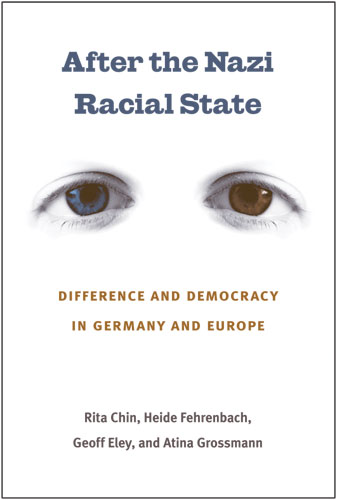Postwar responses to black occupation children represent a formative moment in the racial reconstruction of post-fascist Germany.Posted in Excerpts/Quotes on 2013-08-13 22:56Z by Steven |
Postwar responses to black occupation children represent a formative moment in the racial reconstruction of postfascist Germany. Military occupation between 1945 and 1949 produced some 94,000 occupation children. However, official and public attention fixed on a small subset, the so-called “farbige Mischlinge” or “colored mixed-bloods,” distinguished from the others by their black paternity. Although they constituted a small minority of postwar German births—numbering only about 3,000 in 1950 and nearly double that by 1955—West German federal and state officials, youth welfare workers, and the press invested the children with considerable symbolic significance.
The years after 1945 were constituent for contemporary German racial understanding, and postwar debates regarding “miscegenation” and “Mischlingskinder” were central to the ideological transition from National Socialist to democratic approaches to race. The term “Mischling,” in fact, survived the Third Reich and persisted well into the 1960s in official, scholarly, media, and public usage in West Germany. But its content had changed. Rather than refer to the progeny of so-called mixed unions between Jewish and non-Jewish Germans as it had during the Third Reich, immediately after the war it came to connote the offspring of white German women and foreign men of color. Thus “Mischling” remained a racialized category of social analysis and social policy after 1945, as before. But the definition of which races had mixed, as well as the social significance of such mixing, had fundamentally altered.
Rita Chin, Heide Fehrenbach, Geoff Eleym and Atina Grossmann, After the Nazi Racial State: Difference and Democracy in Germany and Europe, (Ann Arbor: University of Michigan Press, 2009). 31-32.
